Scandinavian women of the Viking era are among the most fascinating people in European history.
The depiction of Viking women in 21st-century popular culture has led to many questions about them. How did they live? What did they look like? Did they participate in raids?
Women in the Viking culture in medieval Scandinavia were intelligent, hard-working, and resourceful. Most were faithful wives and mothers who managed the home and helped on the farm.
Some conducted business, some were master craftswomen, and a few may have fought in combat.
To truly understand Viking women, it’s essential to separate fact from fiction. However, this is not as easy as it seems because some sources about Viking women are ambiguous.
Much information comes from ancient Scandinavian legends, sagas, and folklore. Nevertheless, many things can be known about real Viking women. Keep reading to learn more.
Separate fact from fiction: See Did Female Vikings Go On Raids? to learn more.
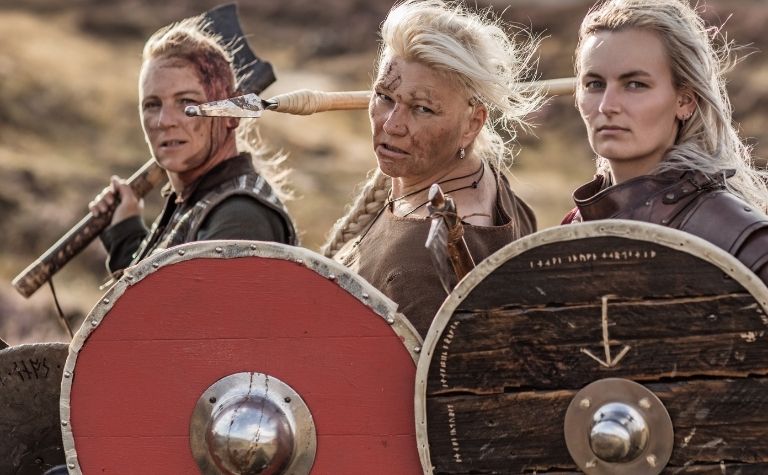
Female Vikings: Separating Fact from Fiction
Often what can be known about Viking women is pieces of history rather than an entire picture.
However, though much information is fragmentary, it’s still trustworthy and helpful to understand the culture and the women who helped make it legendary.
The facts below will help the reader understand who these women were and what their lives were like.
1. Strictly speaking, there were no “Viking” women
In the Viking period, the term “Viking” only applied to men. [1] The history of the word relates to plundering — as in stealing goods from other people — and Scandinavian women at the time didn’t commonly participate in such attacks (see below for possible exceptions).
Over time, however, the word “Viking” took on a broader and came to describe the people, events, and things associated with that period of Scandinavian history.
“Viking” went from being used as a noun reserved for males to an adjective used to describe everything related to the era.
For example, in conventional usage today, it’s common to refer to “Viking ships,” “Viking religion,” “Viking weapons,” and “Viking villages.”
Likewise, in the common use of the English language today, the description “Viking women” is widely accepted. Technically, the term may be historically imprecise, but in most contexts, it’s not considered “wrong.”
Like clothing, Viking hairstyles had functional and fashionable purposes. See Did the Vikings Wear Dreadlocks? to learn more.
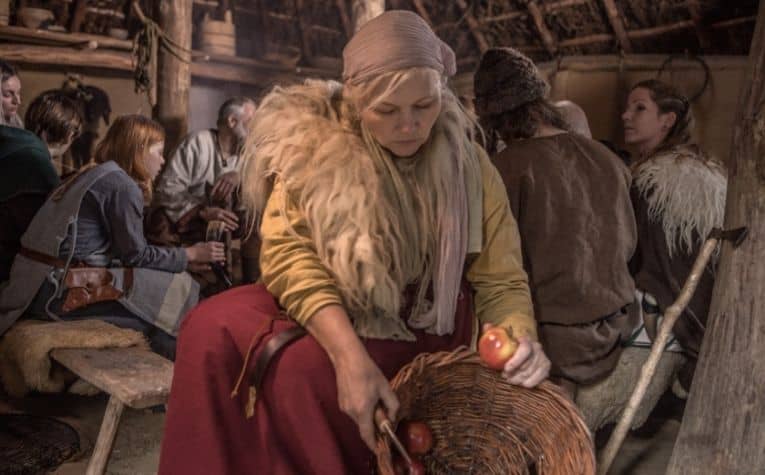
2. Viking women sometimes accompanied men on raids
Women played a critical—though mostly non-combative role—in certain expeditions, like the infamous Viking raids in England and Iceland.
There is evidence that women may have participated in specific raids (see #13 and #14 below), yet these would have been isolated and uncommon occurrences.
Fanciful images, like paintings supposedly depicting Viking women in battle, come from later time periods, and there are likely significant artistic embellishments in the depictions.
This fact doesn’t mean the Viking women who may have raided weren’t courageous, strong, and capable. It may imply that legend has grown around some of their biographies, just as it has with many Viking men.
Most of the time, the role of Viking women when it came to raids was to help with practical matters after the fighting.
Sometimes on raids, Viking warriors looted and returned home. But other times, they settled in the area, and the women helped establish homes and villages.
For example, women would manage the home and work the farm, similar to how they did in Scandinavia.
They also gave birth to children, which helped sustain the population, providing males for work and raids and females to give birth to children and manage the affairs of the home.
Did Vikings have permanent marks on their skin? See Did Vikings Have Tattoos? to learn more.
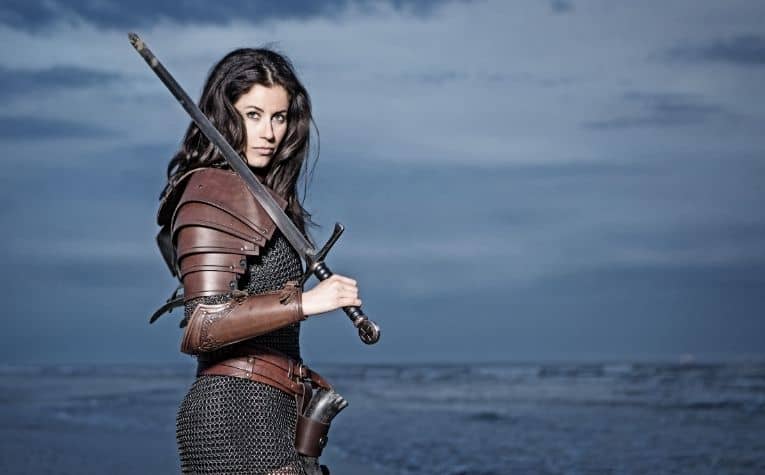
3. Viking women were sometimes buried with valuable goods
How a community buries its dead can reveal important insights about its values and worldview.
Often, burials reflect a person’s importance in their earthly life and their anticipation of what is to come in the next life.
Like Viking men, Viking women sometimes received distinguished burials.
It was customary for Viking men to be buried with items that symbolized their identity. Some were buried with tools used in craftsmanship or farming.
Others were buried with axes, swords, and other weapons, signifying their combat participation. A few Vikings were even buried with, or in, entire ships. (Also see Did Vikings Have Long Hair?)
Viking women were also buried with items that symbolized their identity and role in the family and the community. Some women were buried with pottery and cookware.
Others were buried with fabrics that were likely used for blankets or clothing. Still, others were buried with necklaces and hair ornaments, likely their own work.
Based on burial discoveries, there is evidence that some Viking women may have had a more distinguished role in society.
How they were honored in death suggests that some may have ascended to leadership roles (see #7 below).
What was the fate of Viking women? See Did Female Vikings Go to Valhalla? to learn more.
4. Viking women often married young
Marriage in the ancient world, including in Viking society, was an important life event. It meant leaving the house of their father and mother and beginning a family with their new husband.
It also implied following their husband’s lead as opposed to being under their father’s authority.
Relative to the modern Western world, Viking women married young. On average, they often wed between the ages of 12 and 15.
The parents of the girls often arranged their marriages, but they were not necessarily forced upon them. The girls had a say in whom they married.
One historian explains that a girl’s wishes were considered:
“Though marriages were usually arranged by negotiations between the prospective husband and the bride’s father, the woman’s wishes would usually be taken into account.”
He continues, “A marriage was regarded as an alliance between equals. The bride normally brought a dowry to the partnership, and the husband paid her a ‘bride-price’; both remained her property after marriage.” [2]
Norse literature contains stories of young women competing with certain men to be their husbands.
If based on factual events — even if embellished to some degree — this reflects a certain amount of independence that young women had with regard to choosing, even pursuing, a man to marry.
Do modern depictions get the Vikings’ appearance right? See What Did the Vikings Look Like? to learn more.
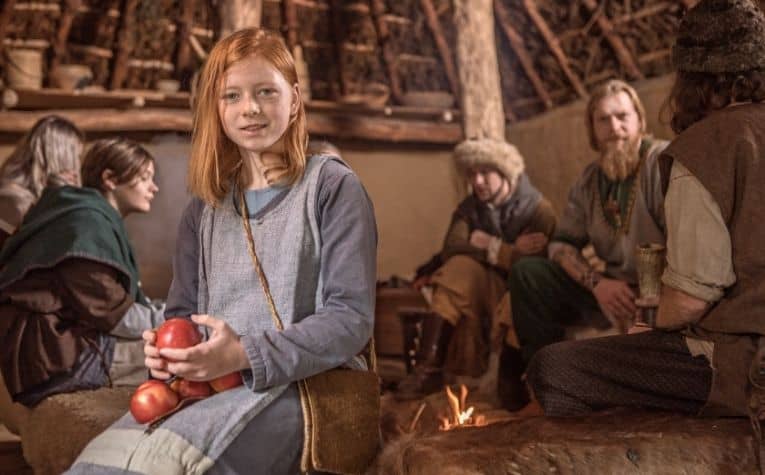
5. Viking women had rights
In many ancient civilizations around the world, women rarely had rights that they could use to exercise expression or make individual choices.
While Viking women didn’t have as many rights as men, they had more rights relative to women in other cultures, especially in regard to land and marriage.
In Viking society, women could own property and initiate a divorce from their husbands. This was a rare right in the Middle Ages.
But there were limitations as well. For example, women could not appear in court, and they could not receive an inheritance. These limitations were more common in the Middle Ages [3]
6. Wives were the unofficial leaders of the household
Officially, Viking men governed or ruled their households, as was common in many old-world cultures. Yet, their wives made key decisions in many practical ways and led the family on many important tasks. (Also see What Did the Vikings Eat?)
Though this was generally true when their husbands were at home, it was even more pronounced when their husbands were away from home, exploring or raiding.
“If her husband was away, at war or on business, a wife would have full responsibility for running the house and farm in his absence; and if she were widowed, she would have to take her husband’s place full time.” [3]
Dying young wasn’t rare for Viking men due to the risk of traveling and fighting in ancient Europe.
When husbands and fathers died, wives and mothers assumed many of their domestic and non-domestic responsibilities.
For example, widows would farm and trade so their families could acquire goods they could not grow or make with their resources.
Relationships were important in Viking culture. See This Is How the Vikings Proposed and Got Married to learn more.
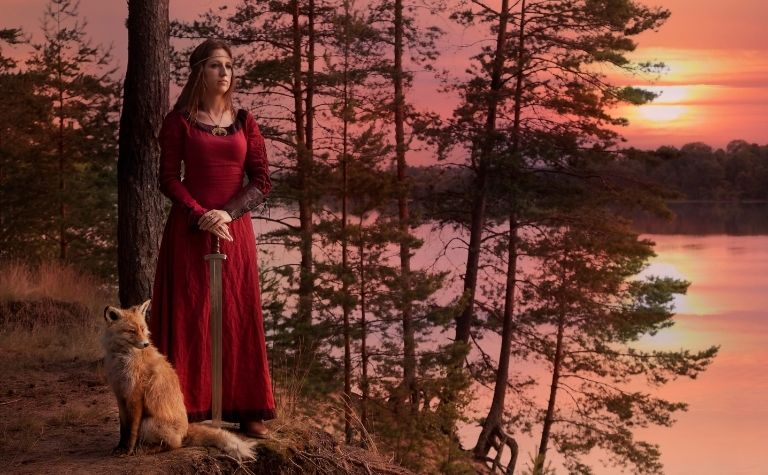
7. The Osberg burial may show that Viking women could be leaders
Around 834 A.D., a Viking woman was buried at Osberg, which is the name of a farm near Tonsberg, Norway. The discovery of the burial site was eye-opening for many historians.
Like prominent Viking men, the woman was buried with a ship and several valuable items, which suggests that she was a woman of great importance.
A young woman was buried with the older woman for unknown reasons.
Some have speculated that the young woman was a human sacrifice, yet others believe she was the older woman’s daughter.
The older woman was laid to rest on a bed of feathers, which was unusual. Luxury items in the 19th century — oil lamps, household tools, and knives — were also buried with her.
Some historians contend that the evidence reveals that the Viking woman was of high standing, like a queen. It’s possible, however, that she was highly honored simply for her age:
“Pagan graves in Denmark suggest that women’s status increased with age: some of the most richly furnished burials are of women aged 50 or over, while the quality of grave goods in male burials decreased with the age of the dead man.” [4]
Many unanswered questions remain about the woman whose body was discovered at Osberg, and research is ongoing.
The Viking way of life was about more than raiding and seafaring. They valued family, farmed land, and played games. See Did the Vikings Play Chess? to learn more.
8. Some associate Viking women with valkyries and shield-maidens
In Norse mythology, Valkyries were female beings who had the ability to choose who lived and who died in battle.
Valkyries are described in 13th-century Scandinavian poetry, which often includes non-literal descriptions.
Some believe valkyries may have been based on real females from Viking history.
Viking women appear to have greatly valued Valkyrie stories.
For example, jewelry depicting Valkyries was cherished by Viking women which have been found in their graves.
9. Some associate Viking women with shield-maidens
Found in Scandinavian folklore and mythology, a shield-maiden was a female warrior. Whether shield maidens were real or not is debated.
Some historians believe they are just fictional characters, but others think they were legitimately trained fighters and raiders. [3]
Whether some shield maidens were buried with weapons is also debated.
Some archaeologists are convinced that bone testing performed on some female corpses from the Viking period reveals that some women were buried with weapons. Others are not persuaded.
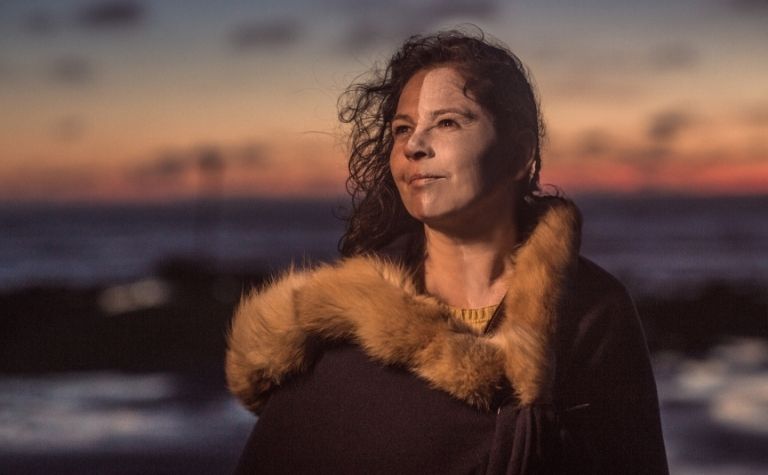
10. Viking women were craftswomen and businesswomen
Viking women worked in the household business, and as described above, their responsibilities would increase when their husbands were away.
Some Viking women worked with textiles, such as wool and yarn. These goods could be used in the household but also sold or traded.
Archaeological discoveries have revealed that some Viking women were buried with scales and weights used in business. This may suggest that they were successful entrepreneurs.
Hair was important in Viking culture. See What Kind of Hairstyles Did the Vikings Have? to learn more.
11. A woman could initiate divorce
Viking women had the right to divorce their husbands, which was uncommon in ancient times.
There were more rules and regulations about divorce at different times in Viking history and different places. One historian explains:
“Women had the right to divorce if a marriage proved unworkable, and the marriage contract could stipulate how the joint estate should be divided in such an eventuality.” [6]
Common reasons to end a marriage included physical abuse and failed business ventures that created poverty for the family.
If the couple had children, the younger ones would live with their mother while the older ones could live with either parent.
12. Viking women could be seers
Seers played an important role in Norse paganism. Many Vikings believed that seers could look into the future.
Viking men often wanted to know about future battles and future crops, among other things.
Seers used various objects and substances in their practice. For example, they used the liquid from snakes called Eitr.
The Norse people believed Eitr produced all living things. Eitr is thought to be poisonous. (Also see Is the Norse Religion Still Practiced Today?)
Seers also used fire, which was associated with a mythological sword-wielding figure called the Surtalogi, who fought other gods in battles that would end with the world being consumed by fire.
Seers also used dew from the mythical Yggdrasil tree, whose branches, it was believed, reached heaven. (Also see Yggdrasil The Sacred Ash Tree of Norse Mythology to learn more.)
Seers would use these substances in rituals and “see” into them, “reading” patterns, shapes, and other details, which they interpreted as messages about the future.
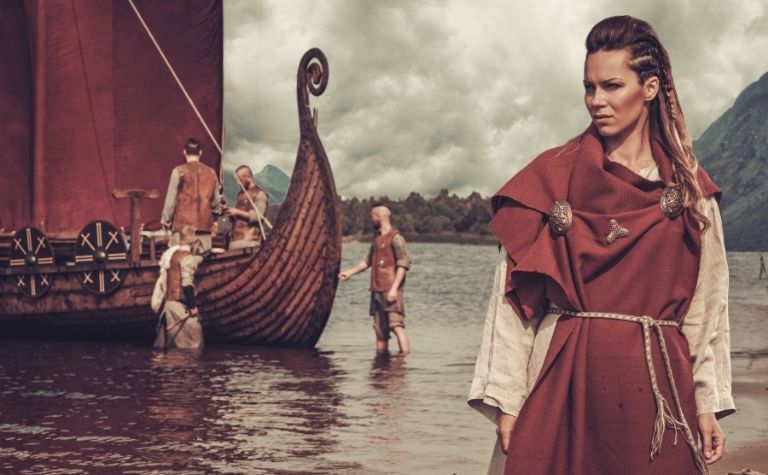
13. Viking women may have fought in some battles
Many people are curious whether Viking women raided with the men. Ancient literature from the Norse people includes stories of women fighters.
The challenge of interpreting these narratives revolves around whether to interpret them as historical fact or mythic fiction.
Historians have noted that sometimes fiction is based on embellished facts, so the question is: What elements of the stories are legend or folklore, and what, if any, reflect real people and true events?
Here are three examples of Viking women in combat:
- Saxo Grammaticus (1160-1220), a theologian and historian from Denmark, wrote that in the 8th century, Viking women dressed like men and participated in the Battle of Bravellir.
- Johannes Skylitzes (est. 1040-1101), a Greek historian and author, wrote that Viking women fought in a battle against the Bulgarians in 971 A.D.
- Freydís Eiríksdóttir (est. 970-unknown), according to the Saga of Erik the Red, was the half-sister of explorer Leif Erickson. In the story, Freydís fights off attacking natives in Vinland, i.e., North America. As the story goes, she yelled to the men,
“Why run you away from such worthless creatures, stout men that ye are, when, as seems to me likely you might slaughter them like so many cattle? Give me a weapon! I know I could fight better than any of you.”
Freydís then picked up a sword and chased the natives away. In the other ancient Scandinavian writing that mentions Freydís, called Greenland Saga, a different narrative is given.
Other historians argue that Viking women did not raid and that descriptions of them are fiction:
“There is no reliable evidence to suggest that women ever fought as warriors alongside menfolk, but it is known that at least some of the warriors of the great Viking armies that were active in western Europe in the second half of the 9th century were accompanied by their wives and families. These women would have given useful support to the army, cooking and caring for the wounded.” [5]
Clothes were important in Viking culture. See What Did the Vikings Wear? to learn more.
14. Lagertha fought against the Swedes
Contrary to the historian quoted above, Saxo Grammaticus, in his 12th-century work Gesta Danorum, records that a female Viking name Lagertha fought in defense against the Swedes when they invaded Norway.
However, some historians believe the stories about Lagertha are fiction. The passage about her fighting reads, “Ladgerda, a skilled Amazon, who, though a maiden, had the courage of a man, and fought in front among the bravest with her hair loose over her shoulders. All marveled at her matchless deeds, for her locks flying down her back betrayed that she was a woman.”
As the story goes, Lagertha’s bravery and fighting ability were so impressive that the great Viking warrior, Ragnar Lothbrok, married her. (Also see 10 Famous Vikings From History)
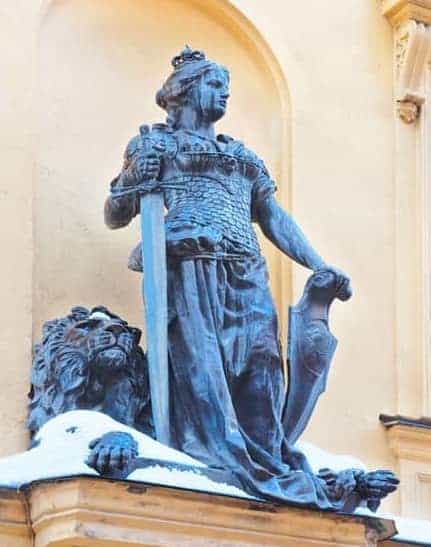
15. Viking women made their clothing and jewelry
Clothing and jewelry of Viking women have been found at historical sites and in graves. (Also see Did the Vikings Have Piercings?)
The evidence indicates that Viking women were excellent craftswomen. These are some common characteristics of what they wore:
- A quality outfit — i.e., not one used while working the farm — would have consisted of a sleeveless, apron-like dress that covered her chest to her shins or ankles.
- Like straps of a modern dress that lie over the shoulder, decorative brooches would have held the dress in place. The dress may have been decorated at the hems with colored thread.
- Necklaces were common among Viking women.
- A cloth or rag was often worn like a bonnet at times in order to keep their hair back while working.
Women sometimes wielded shields in Viking society. See Viking Shields: Patterns, Colors, and Designs to learn more.
References:
[1] Women in the Viking Age. Judith Jesch.
[2] The Penguin Historical Atlas of the Vikings. John Haywood. P. 44.
[3] Source
[4] ibid, p. 44
[5] ibid, p. 45
[6] Source
[7] Haywood, p. 45
